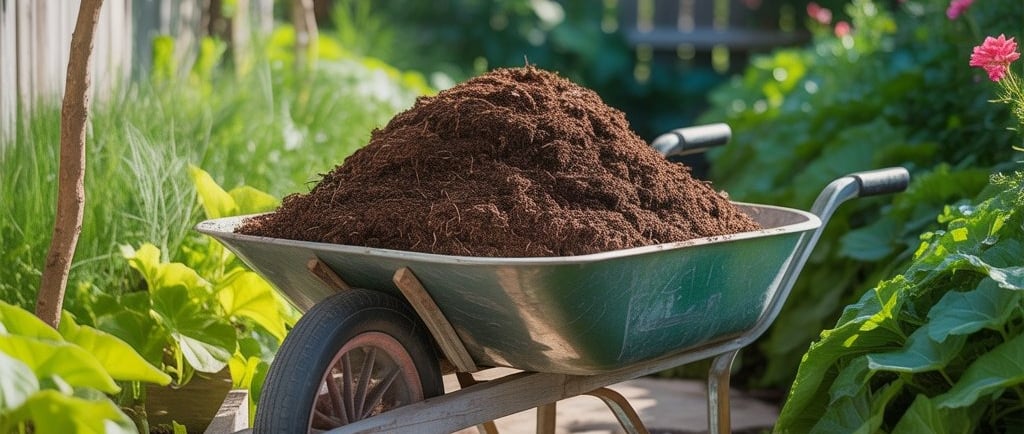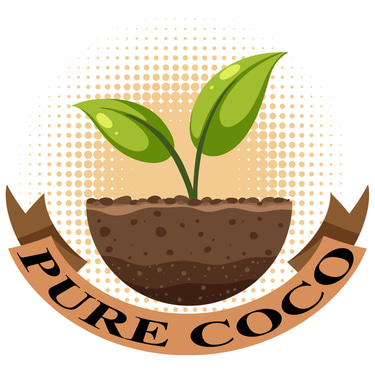Indoor Gardening with Pure Coco Peat: A Beginner’s Guide
7/16/20255 min read


Introduction to Coco Peat
Coco peat, derived from the husk of coconuts, has emerged as a preferred growing medium in indoor gardening. This organic material, also known as coir dust, is produced during the processing of coconut fibers. After the fibers are separated, the remaining dust-like substance is collected and processed into a usable format. Coco peat has gained popularity not only for its unique properties but also for its sustainable characteristics, making it an environmentally responsible choice for gardeners.
One of the standout features of coco peat is its remarkable ability to retain moisture. Unlike traditional soil, which can dry out quickly, coco peat absorbs and retains water efficiently. This property allows gardeners to maintain optimal moisture levels for their plants, reducing the frequency of watering. Additionally, coco peat’s structure promotes excellent aeration, creating a well-balanced environment for root development. The air pockets in coco peat help prevent root suffocation and encourage healthy growth, which is particularly beneficial for houseplants and indoor gardens.
Moreover, coco peat is rich in essential nutrients that help nourish plants throughout their growth cycle. Its natural composition supports microbial life, enhancing the soil ecosystem and resiliency. This ensures that indoor gardeners can cultivate thriving plants with fewer synthetic fertilizers, promoting organic gardening practices. Another notable advantage is the environmental benefit associated with coco peat; its production process utilizes renewable coconut resources, and its biodegradability minimizes ecological impact. By choosing coco peat over conventional soil, gardeners contribute to sustainability and eco-friendliness. This makes coco peat an ideal choice for those who wish to engage in responsible gardening while enjoying the numerous benefits it offers.
Benefits of Using Coco Peat for Indoor Gardening
Coco peat, derived from the husk of coconuts, has gained popularity among indoor gardening enthusiasts for several compelling reasons. One of the most significant advantages of using pure coco peat is its remarkable water retention capacity. This property allows it to hold moisture effectively, ensuring that indoor plants receive a consistent supply of water. As a result, gardeners can reduce the frequency of watering, saving both time and effort while maintaining healthy plant hydration levels.
In addition to water retention, coco peat is also well-known for its excellent drainage properties. This balance of water retention and drainage helps prevent overwatering, which is a common issue that leads to root rot and other detrimental conditions for indoor plants. The structure of coco peat allows excess water to drain away easily, promoting a healthier root environment and supporting robust plant growth.
Another benefit that enhances its appeal for indoor gardening is its lightweight nature. Compared to traditional soil mixtures, coco peat is significantly lighter, making it easier to handle and transport. This characteristic is particularly advantageous for indoor gardeners who may need to move their potted plants frequently for light and aesthetic purposes.
Coco peat is also pH neutral, which means it won’t adversely affect the acidity or alkalinity of the growing medium. This quality makes it an excellent substrate for a wide variety of indoor plants, allowing them to thrive in a stable environment. Furthermore, coco peat fosters seed germination by providing ideal conditions for young plants. Its airy structure and supportive qualities stimulate root development, contributing to healthy and vigorous growth. Overall, these benefits make coco peat an excellent choice for both novice and experienced indoor gardeners seeking efficient and effective growing mediums.
How to Use Coco Peat in Indoor Gardening
Using coco peat in indoor gardening offers numerous benefits, including excellent moisture retention and promoting healthy root growth. To get started with this versatile growing medium, first, you need to prepare the coco peat. Begin by soaking it in water for approximately 30 minutes. This process helps to expand the compressed blocks, ensuring that it absorbs moisture adequately. After soaking, fluff the coco peat with your hands to break up clumps, resulting in a light and airy texture.
If you prefer to enhance the coco peat’s properties or are growing specific plants that require different mediums, you can mix coco peat with other growing media. Common combinations include perlite for improved drainage or vermiculite for added moisture retention. A typical mix could involve equal parts of coco peat and perlite, which promotes aeration while maintaining moisture levels conducive to plant health.
Once your coco peat is prepared and mixed, it is essential to implement effective potting techniques. Fill your pots or containers with the coco peat mixture, making sure to leave some space at the top for watering. When potting your plants, ensure that the root ball is positioned adequately within the mixture, allowing the roots to spread out without any obstructions. After potting, gently press the coco peat around the base of the plant to secure it, but be cautious not to compact it too firmly.
Watering practices are crucial in indoor gardening. Coco peat retains moisture, so it is advisable to let the top inch of the medium dry before watering again. Overwatering can lead to root rot. Additionally, incorporating a fertilization regimen will enhance your plants' growth. Fertilize with a balanced nutrient solution every 4-6 weeks, as coco peat does not provide inherent nutrients. Finally, regular maintenance, including monitoring for pests and adjusting watering frequency to seasonal changes, will ensure your indoor garden thrives in coco peat.
Common Indoor Plants to Grow with Coco Peat
Indoor gardening offers a tranquil escape and enhances the decor of any living space. With the use of pure coco peat, beginners can cultivate various indoor plants effectively. Below is a curated list of popular indoor plants well-suited for growth in coco peat, along with their required care and the advantages of using this growing medium.
The peace lily is an excellent choice for indoor gardening. Its glossy leaves and beautiful white flowers add elegance to any room. Peace lilies thrive in low to medium light and enjoy a humid environment. Using coco peat provides excellent aeration and moisture retention, ensuring that the roots do not become waterlogged.
Spider plants are another popular indoor option known for their arching leaves and air-purifying qualities. These plants adapt easily to various light conditions, although bright, indirect light is ideal. The high water retention capabilities of coco peat support spider plants by maintaining consistent moisture without oversaturation.
Snake plants, also referred to as mother-in-law's tongue, are renowned for their resilience and ability to thrive on neglect. They prefer moderate to low light and infrequent watering. Coco peat is beneficial here as it allows excess water to drain away, preventing root rot—a common issue with snake plants.
The pothos is a versatile indoor plant with trailing vines that can thrive in various lighting conditions. Its preference for slightly dry soil makes coco peat an excellent choice, as its natural moisture retention can be tailored to suit the plant's needs.
Lastly, fiddle leaf figs have gained immense popularity for their large, impactful leaves. They require bright, indirect light and moderate watering. Growing them in coco peat can help with aeration and drainage, supporting healthy root development.
By choosing these plants and using coco peat as the growing medium, beginners can confidently embark on their indoor gardening journey, yielding beautiful and thriving indoor greens.
Pure Coco
Explore our range of coco peat products today.
Support
Contact
info@purecoco.com
+91-9015762289
© 2025. All rights reserved.
Support
